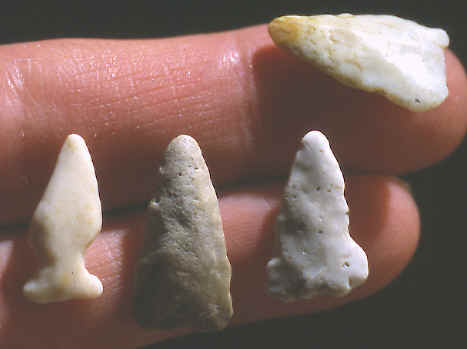
A. Gizzard
stones.
One double-notched and three triangular points, Cahokia Mounds State
Historic Site, Madison and St. Clair counties, Illinois. Collection
of P.A. Bostrom. (© photo by Peter A. Bostrom) -- See
third paragraph under Remarks subheading.